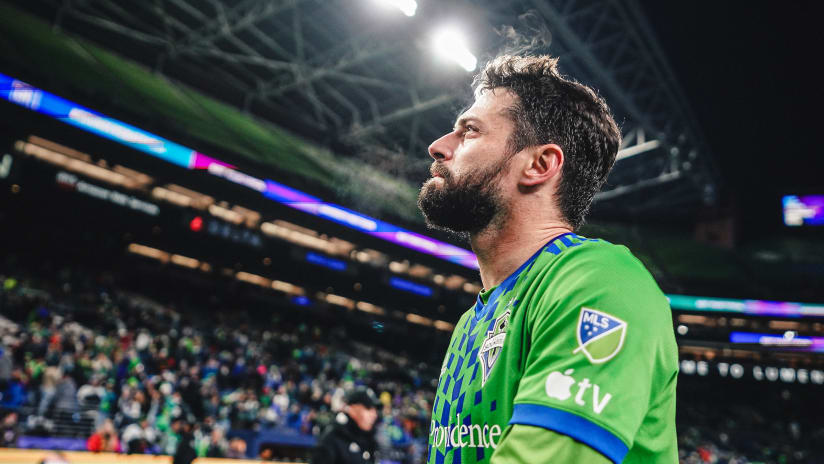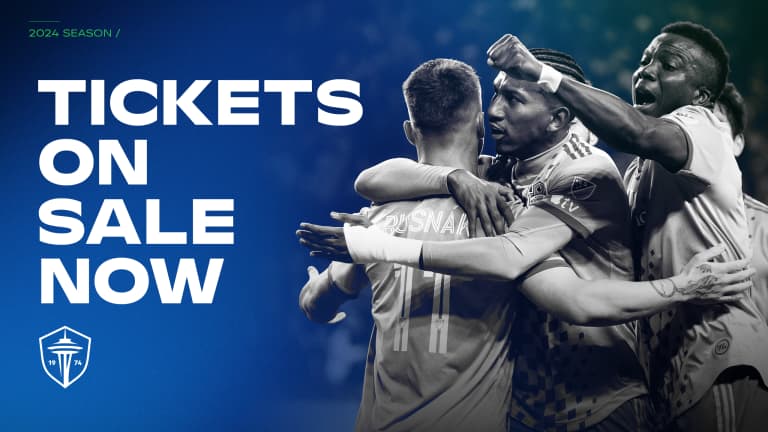There are certain inevitabilities in life that are comforting in their certitude. The sun will rise in the east. Banks of clouds will roll in off the Pacific Ocean and over the Olympic Mountains and sit over Seattle. And Sigi Schmid will play a 4-4-2.
Or maybe certainty is overrated. Barring a global cataclysm, at least one of those things might not be all that frequent this year.
Seattle’s first preseason game against the Vancouver Whitecaps on Wednesday night in Tucson, Arizona offered little in the way of personnel talking points. This is the preseason, after all, where results are meaningless and player performances don’t necessarily lend themselves to any broader conclusions. Fitness is mentioned inside team circles far more often than form. The latter, after all, tends to spring like eager fountain water from the former.
In that sense, we can say that Joevin Jones acquitted himself well at left back, or that Jimmy Ockford did enough to earn himself another look at center back while Roman Torres and Brad Evans heal, or that Clint Dempsey executed a few deft chip passes. But on a broader scale, those things don’t mean much, and the fact that Seattle lost 2-1 in two halves before facing FC Tucson for a third is more or less irrelevant.
What is not, however, is whether Schmid, so long one of the most ardent proponents of the 4-4-2 in America, is about to make a wholesale change to a 4-3-3 during his eighth season on the bench in Seattle.
The Sounders played three halves on Wednesday, and a solid approximation of an opening day lineup played for the first 45. Schmid rolled out a 4-3-3 in all three halves, but it was in those first 45 that he no doubt found the most interest.
“It was OK,” Schmid told reporters after the game. “As the first half went on I thought we played better, which is a good sign. Guys trying to get used to each other in a little bit new positions. The game is always a little bit different than it is in practice. I was happy with some of the chances we created.”
The front line consisted of Nelson Valdez, Clint Dempsey and Obafemi Martins, while the middle cluster was Osvaldo Alonso, Erik Friberg and Andreas Ivanschitz. In the middle, the idea is to presumably have Alonso sitting as the destroyer and redistribution specialist while Ivanschitz lists to the left-hand side and and Friberg ventures off as the box-to-box link leaning to the right.
This covers the back line with two midfielders comfortable marking and one (Ivanschitz) who can and actually prefers to provide pinpoint service from a bit deeper, and not necessarily from the wing either. Ivanschitz got off fewer crosses than one might expect last season, favoring instead a more Andrea Pirlo approach involving longer through balls and diagonals from the center-left. With this much speed and finishing ability up top, Schmid is no doubt happy to let Ivanschitz serve in that role again in 2016.
That should provide steady balance in the midfield. With players like Cristian Roldan ready and able on the bench, the central midfield looks far readier to start the season in this formation than it would in a more rigid 4-4-2. The bigger question mark is how the front line interacts.
Of late, Schmid’s 4-4-2 has served more to involve Seattle’s talented forwards, namely Dempsey and Martins, than it has to fit to the midfield’s strengths. Schmid has been using this formation forever, but he’s been especially careful to keep it well pruned lately because it seems to be the best system to put Dempsey and Martins in dangerous positions around the box. And there’s little question the two work well together in its construct.
In its weaker moments, the bigger problem has always been linkage between those two and the midfield, and the 4-3-3, at least on paper, serves to fix some of those issues. That said, it’s entirely unclear how a front three of Valdez, Martins and Dempsey will operate together. That’s not to say they can’t, simply that they haven’t inside this construct.
If Dempsey played in the middle, it’s likely he’d prefer to drop back to find Friberg (or whoever is playing in the No. 8 role). That’d create a gap in the middle the two outside forwards would be most comfortable filling. In effect, that’d make Dempsey more of a central attacking midfielder type, which isn’t ideal. Dempsey is no target striker. It would also fundamentally shift the formation to look more like a two-striker format again.
Martins, too, is not that kind of player, and Valdez prefers to circle back and run at defenders rather than push the line and try to sneakily beat traps. It isn’t that neither can’t fit into that role, and in this system that might be a point of emphasis during preseason camp in Arizona. But at least in Martins and Dempsey’s case over the past few years, they certainly haven’t had to fill those spots before.
And that’s just it. The 4-3-3 is a good decision on paper, and it can certainly work if things come together and the front line can find its chemistry this offseason. It would seem to provide a serious amount of flexibility in the middle, where the team can use Ivanschitz creatively and involve Friberg in a way that doesn’t require him to stay tethered to one spot. How Jordan Morris fits in, and whether a front three is viable at all, is perhaps the most important question the Sounders will answer this month.
If not, the 4-4-2 is always waiting.








